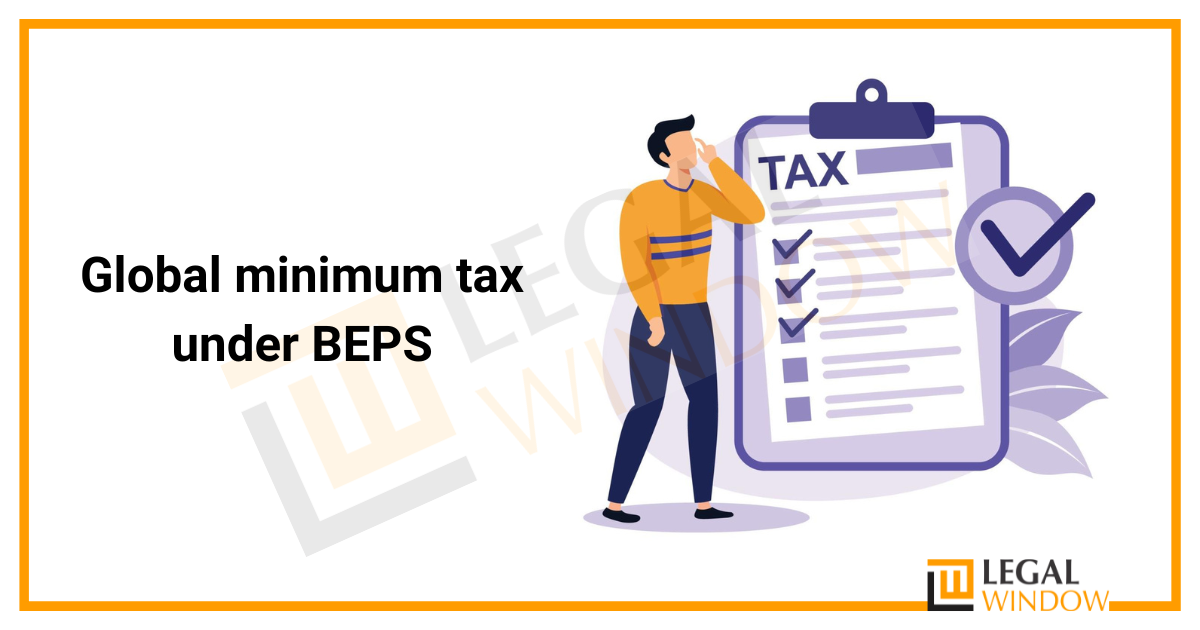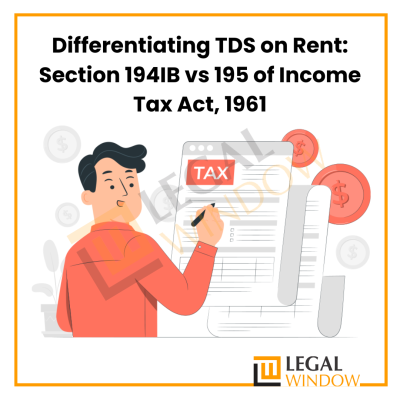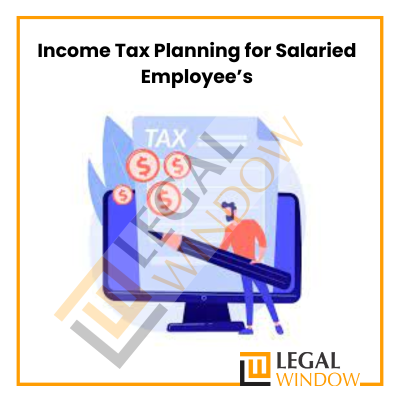
The Global Minimum Tax (GMT) applies a standard minimum tax rate worldwide to a defined corporate income base. The OECD has drawn up a proposal stating a minimum corporate tax of 15% on the foreign profits of large multinationals, which would bring countries $150 billion in new annual tax revenue. The GMT framework aims to deter nations from tax competition through lower tax rates that lead to corporate profit shifting and tax base erosion. In this article, we will discuss the Global minimum tax under BEPS.
| Table of Contents |
Overview on BEPS
Base erosion and profit shifting (BEPS) refers to tax planning strategies used by multinational companies that exploit loopholes and inconsistencies in tax rules to avoid paying taxes. Developing countries’ higher dependence on corporate income tax means that they suffer disproportionately from BEPS. In the OECD/G20 Inclusive Framework on BEPS, more than 135 countries and jurisdictions work together to implement 15 measures to tackle tax avoidance, and improve the coherence of international tax rules.
What is the Global Minimum Tax?
This is a global agreement to ensure that large companies pay a minimum tax rate of 15%, making it harder for them to avoid taxation, which has been approved by 136 countries.
The COVID-19 crisis has put financial pressure on the global economy, and governments have wanted to discourage multinational companies from shifting profits and tax revenues to low-tax countries or tax havens.
The minimum tax and other provisions end long tax competition between governments for foreign investment.
Proposed two-pillar solution: A global minimum tax rate would apply to foreign profits of multinational firms with sales of $868 million
- Pillar 1 (Minimum tax and according to tax rules): Governments can set whatever local corporate tax rate on discretion, but when companies pay lower rates in a specific country, the home governments could “top-up” their taxes to the minimum of 15%, eliminating the benefit of profit shifting.
- Pillar 2 (Redistribution of additional profit share to market jurisdiction): It allows countries where revenues are earned to tax 25% of the so-called excess profits of the largest multinationals – defined as profits exceeding 10% of revenues.
- The agreement calls for countries to sign it into law in 2022 so it can enter into force by 2023.
- Countries that have created national taxes on digital services (such as the Government of India’s equalization tax) will have to abolish them.
Need for a global minimum tax rate
- Financial diversion to tax havens:
- Income from intangible sources such as drug patents, software, and intellectual property royalties are increasingly migrating to tax havens, allowing companies to avoid paying higher taxes in their traditional home countries.
- GMT aims to stop this outflow of tax revenue from countries of origin.
- Mobilization of financial resources: The OECD estimates that a minimum tax would generate $150 billion in additional global tax revenue annually.
- Global tax reforms:
- Following the launch of the Base Erosion and Profit Shifting (BEPS) program, the GMT proposal is another positive step towards global tax reforms.
- BEPS refers to tax avoidance strategies that use loopholes and mismatches in tax rules to artificially shift profits to low or zero-tax areas. The OECD has issued 15 action points to address this issue.
Challenges of Global Minimum Tax
- It alludes to the sovereign’s right to decide on the tax policy of the country. A global floor rate would essentially take away the ways countries use to enforce policies that suit them.
- The time frame to implement the laws by 2022 so that they can come into force from 2023 is a tough task for countries.
- The agreement has also been criticized for lack of effectiveness.
How will the global minimum tax work?
The Global Minimum Tax consists of three basic rules: the Income Inclusion Rule (IIR), the Under-Taxed Payment Rule (UTPR), and the Taxable Rule (STTR).
The IIR will be applied preferentially to the UTPR, which will act as a hedge against the IIR. The IIR and UTPR will operate in a different but complementary manner. They will refer to a generally similar calculation methodology and set of rules. Both rules will refer to the same minimum effective tax rate, which will be at least 15% and will be calculated based on a single set of rules specific to the global minimum tax. Combined, IIR and UTPR are referred to as GloBE.
The STTR is a rule based on a treaty and is different from the IIR and UTPR in a fundamental sense. STTR will refer to a rate of 7.5% to 9% and will be applied preferentially to both IIR and UTPR. However, STTR is narrower in scope and may face implementation hurdles.
When will the Global Minimum Tax start to apply?
The global minimum tax is due to come into effect in 2023.
In theory, the IIR can only be introduced with changes in national law. If there are no political obstacles, the 2023 timetable could be achieved.
UTPR is still under development. However, its final form will probably only be realizable through changes in national law. However, its introduction may be delayed. If the UTPR is delayed, it may enter into force in 2024, 2025, or 2026.
The STTR, which is a treaty-based rule, allows a jurisdiction to deny the benefits of a treaty in certain circumstances and will have an impact on the operation of treaties. Its implementation would therefore require a multilateral instrument. While the draft of such an instrument and an agreement in principle can be reached relatively quickly, we have seen a delay in the ratification of the previous multilateral instrument that was used to implement certain minimum standards in the previous OECD Base Erosion and Profit Shifting project.
A significant coordinated effort will be required to bring the STTR into force in 2023.
Exclusion of certain industries from the global minimum tax
The global minimum tax applies quite widely. At this stage of negotiations, global shipping seems likely to be ruled out. Fund instruments subject to certain conditions are also likely to be excluded.
The applicability of exemptions will need to be assessed on a case-by-case basis. Other industries are generally subject to the global minimum tax.
Final words
Since the OECD plan essentially seeks to create a global tax cartel, it will always face the risk of losing out to low-tax jurisdictions outside the cartel and cheating by cartel members. After all, countries inside and outside the cartel will have the incentive to promote investment and economic growth within their respective jurisdictions by offering businesses lower tax rates. This is a structural problem that will persist as long as the global tax cartel exists.
CA Pulkit Goyal, is a fellow member of the Institute of Chartered Accountants of India (ICAI) having 10 years of experience in the profession of Chartered Accountancy and thorough understanding of the corporate as well as non-corporate entities taxation system. His core area of practice is foreign company taxation which has given him an edge in analytical thinking & executing assignments with a unique perspective. He has worked as a consultant with professionally managed corporates. He has experience of writing in different areas and keep at pace with the latest changes and analyze the different implications of various provisions of the act.
Categories
- Agreement Drafting (23)
- Annual Compliance (11)
- Change in Business (36)
- Company Law (148)
- Compliance (90)
- Digital Banking (3)
- Drug License (3)
- FEMA (17)
- Finance Company (42)
- Foreign Taxation (6)
- FSSAI License/Registration (14)
- GST (120)
- Hallmark Registration (1)
- Income Tax (202)
- Latest News (34)
- Miscellaneous (165)
- NBFC Registration (8)
- NGO (14)
- SEBI Registration (6)
- Section 8 Company (7)
- Start and manage a business (21)
- Startup/ Registration (130)
- Trademark Registration/IPR (40)
Recent Posts
About us
LegalWindow.in is a professional technology driven platform of multidisciplined experts like CA/CS/Lawyers spanning with an aim to provide concrete solution to individuals, start-ups and other business organisation by maximising their growth at an affordable cost.









